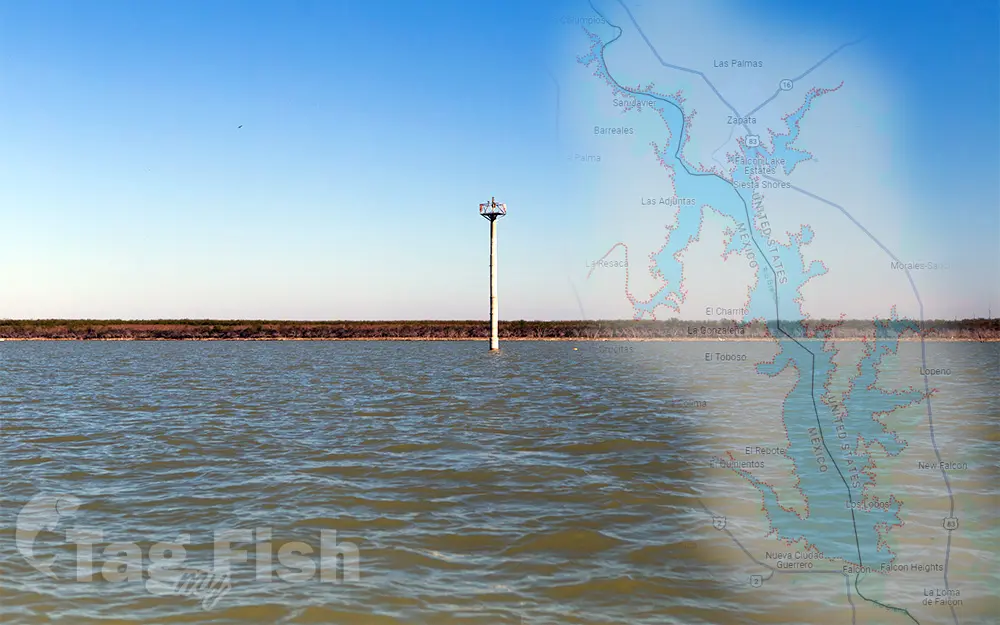Falcon International Reservoir

General data
- Name: Falcon International Reservoir
- Water system: Rio Grande
- Water type: Artificial lake
- Progression: Rio Grande -> Gulf of Mexico -> Atlantic Ocean -> Planet Earth
- Climates: Subtropical, Arid (desert)
- Continents: North America
- Countries: Mexico, United States of America
Falcon International Reservoir (Spanish: Embalse Internacional Falcón), commonly called Falcon Lake, is a reservoir on the Rio Grande 40 miles (64 km) southeast of Laredo, Texas, United States, and Nuevo Laredo, Tamaulipas, Mexico. The huge lake is bounded by Starr and Zapata Counties on the Texas side of the international border and the municipality and city of Nueva Ciudad Guerrero on the Tamaulipas side. The reservoir was formed by the construction of the Falcon Dam to provide water conservation, irrigation, flood control, and hydroelectricity to the area. The dam was dedicated in October 1953 by Mexican President Adolfo Ruiz Cortines and U.S. President Dwight D. Eisenhower. The dam and lake are managed jointly by governments of the United States and Mexico through the International Boundary and Water Commission, which was established in 1889 to maintain the border, allocate river waters between the two nations, and provide for flood control and water sanitation. The lake is named after María Rita de la Garza Falcón, for whom the town of Falcon (displaced by the creation of the reservoir) was named. Falcon International Reservoir has been stocked with species of fish intended to improve the utility of the reservoir for recreational fishing. Fish present in the reservoir include largemouth bass, crappie, catfish, and channel catfish. On the shores of Falcon Lake are Texas wild olive (Cordia boissieri), Mexican oregano (Lippia graveolens), hibiscus, mesquite thickets, huisache (Vachellia farnesiana var. farnesiana) and prickly pear cactus (Opuntia spp.). Greater roadrunners, collared peccaries, white-tailed deer, and black-tailed jackrabbits also exist within the park.

 English
English
 Spanish
Spanish
 German
German
 French
French
 Serbian
Serbian
 Russian
Russian

